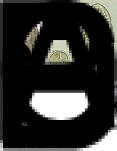Identification of the avian tracheal trematode Typhlocoelum cucumerinum (Trematoda: Cyclocoelidae) in a host-parasite-environment system: diagnosis, life cycle and molecular phylogeny
- PMID: 34103107
- PMCID: PMC11010135
- DOI: 10.1017/S0031182021000986
Identification of the avian tracheal trematode Typhlocoelum cucumerinum (Trematoda: Cyclocoelidae) in a host-parasite-environment system: diagnosis, life cycle and molecular phylogeny
Abstract
Typhlocoelum cucumerinum is a tracheal parasite of birds widely distributed across the globe. Nevertheless, aspects of the biology of this cyclocoelid are still poorly understood. Herein, we report the finding of T. cucumerinum in definitive and intermediate hosts from an urban waterbody of Brazil. The parasite was initially detected during the necropsy of domestic Muscovy ducks (Cairina moschata) found dead in the locality. Coproparasitological tests in live animals revealed that 12/47 (25.53%) Muscovy ducks and 2/8 (25%) mallards (Anas platyrhynchos platyrhynchos) were infected with T. cucumerinum. Moreover, rediae and metacercariae morphologically similar to T. cucumerinum were found in 3/248 (1.33%) Biomphalaria straminea collected in the same waterbody frequented by the birds. The conspecificity between the adult and the larval stages was confirmed molecularly (100% similarity in Cox-1). Moreover, the phylogenetic position of T. cucumerinum was determined for the first time based on partial fragments of the 28S, Cox-1 and Nad-1 genes. The species grouped with other members of the subfamily Typhlocoelinae with sequences available, but the data obtained do not support the distinctiveness of the genera Typhlocoelum and Tracheophilus. Further studies involving a broader range of species can result in taxonomic rearrangements in Typhlocoelinae.
Keywords: Typhlocoelinae; domestic waterfowl; life cycle; phylogeny.
Conflict of interest statement
None.
Figures




References
-
- Barry MR (1959) Flukes in the respiratory tract of ducks. Australian Veterinary Journal 35, 432.
-
- Branton SL, Deaton JW, Gerlach H and Ruff MD (1985) Cyclocoelum mutabile infection and aortic rupture in an American coot (Fulica americana). Avian Diseases 29, 246–249. - PubMed
-
- Clements JF, Schulenberg TS, Iliff MJ, Billerman SM, Fredericks TA, Sullivan BL and Wood CL (2019) The eBird/Clements Checklist of Birds of the World:v2019. Available at https://www.birds.cornell.edu/clementschecklist/download/.
-
- Dawes B (1968) The Trematoda. London, UK: Cambridge University Press.
-
- Diesing KM (1850) Systema Helminthum, vol. 1. Braumüller: Voindobonae.
Publication types
MeSH terms
LinkOut - more resources
Full Text Sources
Medical

